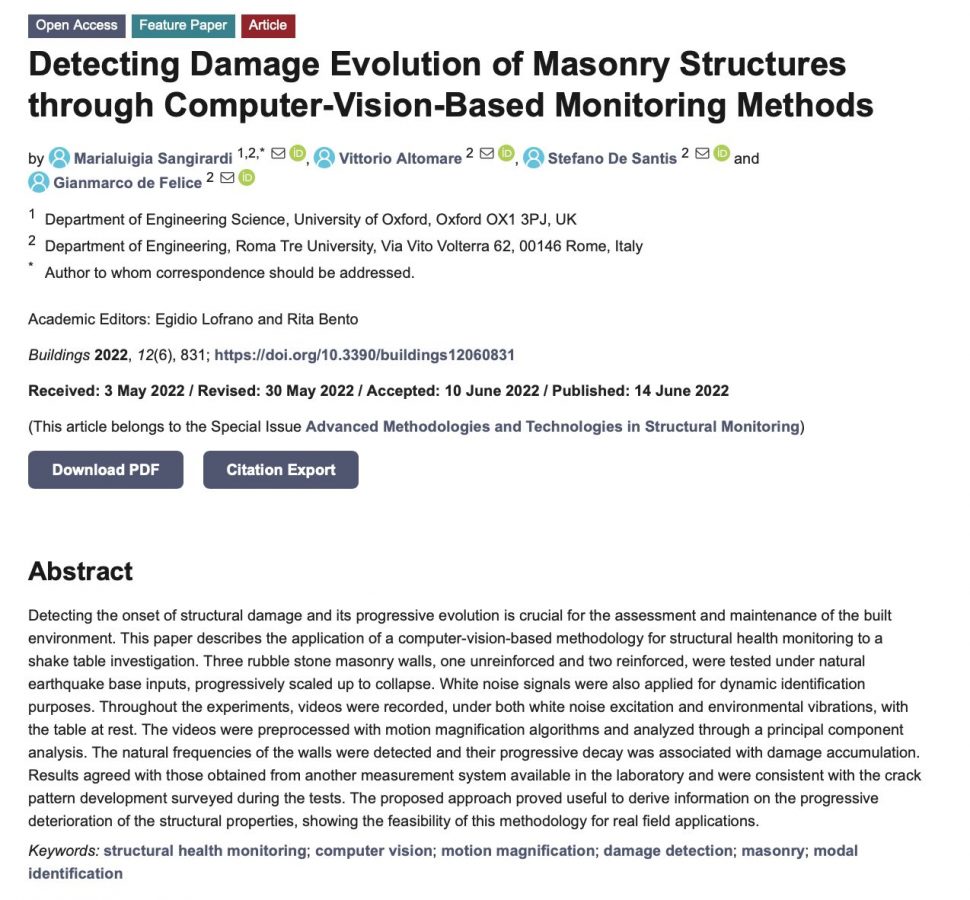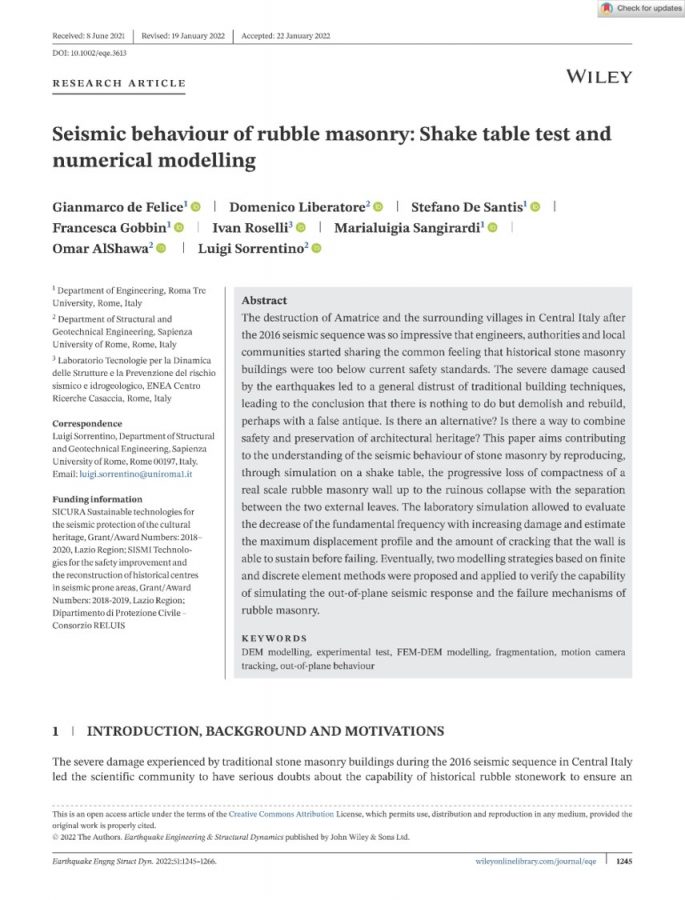🏛️🔍 MetroArchaeo2024 Conference: Special Session Announcement🔍🏛️
📢 Join us at the upcoming 2024 IEEE International Conference on Metrology for Archaeology and Cultural Heritage (MetroArchaeo2024)
📍Valletta, Malta
📅 October 7th to 9th, 2024
for the special session:
🌟 Integrated Methods, Theories, and Applications for Structural Health Monitoring and Assessment of Ancient Constructions
Link: https://www.metroarcheo.com/special-session-21
Conveners
Pietro Meriggi, Roma Tre University
Fabio Tosti, University of West London
Luca Bianchini Ciampoli, Roma Tre University
Vittorio Paris, University of Bergamo
Scope and Motivation
The special session aims to showcase the potential of advanced survey tools for the structural assessment of ancient constructions. The challenges and opportunities of combining digital survey, non-destructive testing and structural monitoring to develop multiple multi-survey approaches for the preservation of cultural heritage will be discussed.
Main Topics
Topics of interest include, but are not limited to:
– Non-destructive testing (NDT)
– Structural health monitoring (SHM) with conventional and innovative systems
– Remote Sensing for large-scale monitoring and evaluation
– Immersive technologies for cultural heritage management
– Image-processing techniques for geometry identification and structural monitoring
– Digital surveys for structural model generation
– Analytical, graphical, and numerical analysis
– Structural conservation and restoration interventions
– Integration of multi-survey data for structural analysis
– Case studies demonstrating the practical applications of multi-survey approaches
– Review papers in related research areas will also be considered.
🚀 Don’t miss out on this unique opportunity to be at the forefront of innovative approaches to heritage preservation and structural analysis. Submit your abstracts (LINK) and mark your calendars for MetroArchaeo2024! 🚀
More info at LINK



